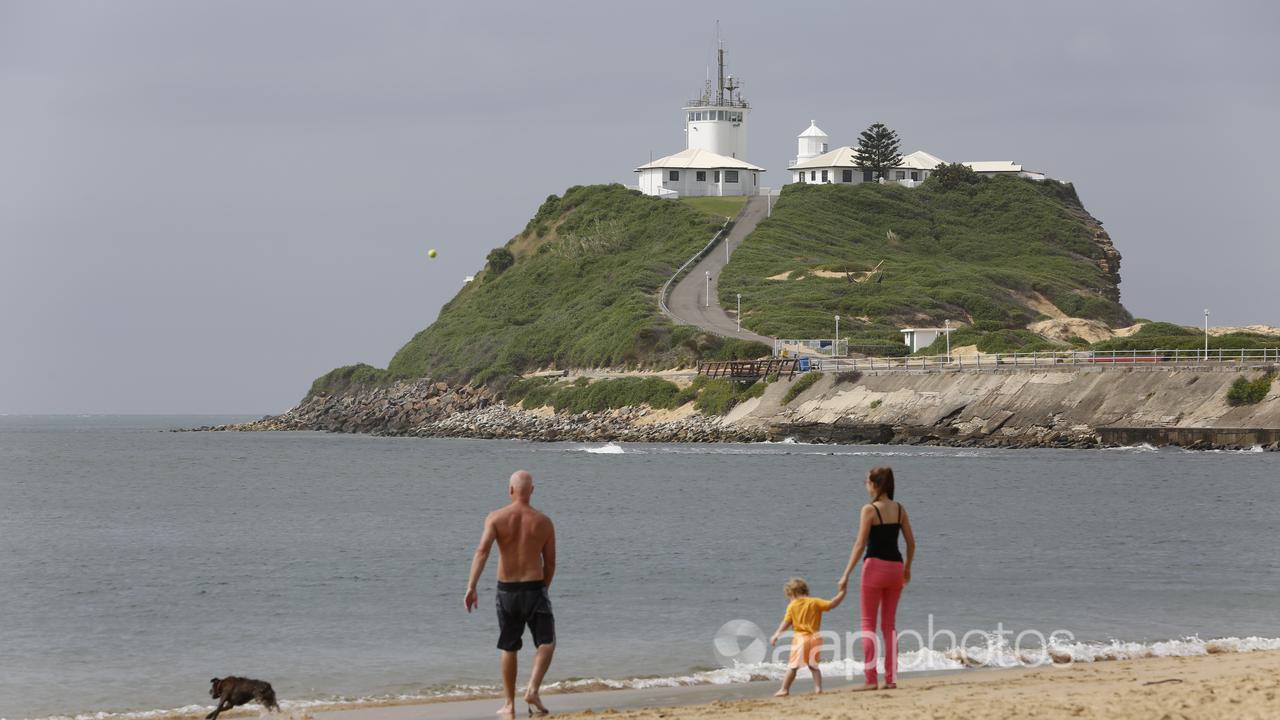One Nation has set up its election pitch to climate change sceptics with a claim that Australia’s longest-running weather station shows no warming trend since records began more than 150 years ago.
However, climate experts say reliable temperature data shows a clear warming trend since 1910, and that data from before this period is not sound if uncorrected due to the lack of standardised measuring equipment.
In a climate policy on the minor party’s website, One Nation is identified as “the only political party to question climate science”.
Among other claims, the policy states that global warming did not appear to show up in Australian records and that the purported longest-used station – Nobby’s Signal Station at Newcastle “has shown no pattern of warming since temperature records were collected in 1962”
“The hottest mean average temperatures at Nobby’s were before 1900 and the highest maximums before 1890,” it says.
Data from the station shows that the highest annual mean maximum temperatures recorded at the station were in the 1800s, while the long-term average for the period to 1900 was also higher than after the turn of the century.
However, the data also shows annual mean minimum temperatures were significantly lower during the same period, indicating a high degree of variability in the early figures.
Other long-running weather stations on Australia’s east coast – such as Moruya Heads and Yamba – also show trends of high temperature variability pre-1910.
A Bureau of Meteorology (BOM) spokeswoman told AAP FactCheck in an email the early variability in records was due to a lack of standardised equipment such as Stevenson screens, which are used to protect instruments from direct or reflected sunlight.
She said these screens were not widely introduced in NSW until 1908, meaning readings from before this time could not be directly compared with later temperatures at most NSW locations.
Dr Linden Ashcroft, a climate scientist from the University of Melbourne, described the data from Nobbys Signal Station as “one of the least consistent pre-1900 temperature records I’ve looked at in eastern Australia”.
In an analysis mapping changes in readings at the station against the use of different instrumentation, Dr Ashcroft said she and colleagues showed there were clear anomalies associated with equipment changes rather than shifts in weather and climate.
On its website, the BOM notes that its national analysis begins in 1910 despite the existence of temperature records from some locations since the mid-19th century. This was due to the lack of standardised equipment and the absence of a national network of observations before this time.
Its national ACORN-SAT dataset, drawn from observations at 112 weather stations across Australia, shows that surface air temperatures had warmed by one degree since 1910, with most of the warming occurring since 1950, according to the website.
A 2012 study led by Dr Ashcroft used a homogenisation process to remove the impact of non-climatic factors such as non-standardised thermometer screens in order to increase the reliability of pre-1910 temperature data.
When the adjusted readings were combined with ACORN-SAT data, the study found a clear warming trend across southeastern Australia since 1860, with temperature increases since 1960 “the largest and most significant over the past 152 years” (page 227).
Long-term warming can also be seen in data from Nobbys Signal Station after a period of cooling in the first half of the 20th century. The average annual maximum temperature recorded at the station was 21.5C in the period from 1910 to 1950, while from 1980 to 2020 it was 22.1C. During the same periods, the average annual minimum temperature rose from 14.3C to 14.9C.
The BOM spokeswoman said the trends recorded at the station matched the pattern across eastern Australia, “which saw slight cooling from 1910 to mid-century and then consistent warming after 1960”.
Dr Danielle Verdon-Kidd, a senior lecturer specialising in climatology at the University of Newcastle, said the position of Nobbys Signal Station may also impact the reliability of its data, noting the site was not included in BOM’s national dataset – which indicated there were likely to be quality issues with its readings.
“The station is …. located right on the coast so is subject to various coastal processes (nor’easters for example) that can affect the local temperature,” she told AAP FactCheck in an email.
Other global temperature records show clear evidence of long-term warming. NASA data, based on land and sea surface temperatures, shows global average temperatures remaining fairly steady through the late 19th and early 20th century before a significant warming period from the 1960s onwards.
This warming trend coincides with a dramatic increase in atmospheric and human-induced carbon dioxide emissions since the mid-20th century.
The BOM spokeswoman also noted that Nobbys Signal Station was not Australia’s longest-running weather station. The first observations were taken at the site in 1862, while Observatory Hill in Sydney has been operating since 1859 and various sites around Adelaide since 1839.
The Verdict
The claim that temperature records from Nobbys Signal Station show no pattern of warming is misleading. Records from the site show a clear warming trend since instruments were standardised in 1910. Experts say readings from before this time are unreliable due to the equipment used.
Misleading – The claim is accurate in parts but information has also been presented incorrectly, out of context or omitted.
* Editor’s note: AAP FactCheck has expanded its ability to fact-check environmental issues with the support of the Australian Conservation Foundation. AAP FactCheck retains full editorial independence in this project and continues to apply the rigorous standards required for accredited members of the International Fact-Checking Network.
All information, text and images included on the AAP Websites is for personal use only and may not be re-written, copied, re-sold or re-distributed, framed, linked, shared onto social media or otherwise used whether for compensation of any kind or not, unless you have the prior written permission of AAP. For more information, please refer to our standard terms and conditions.


















